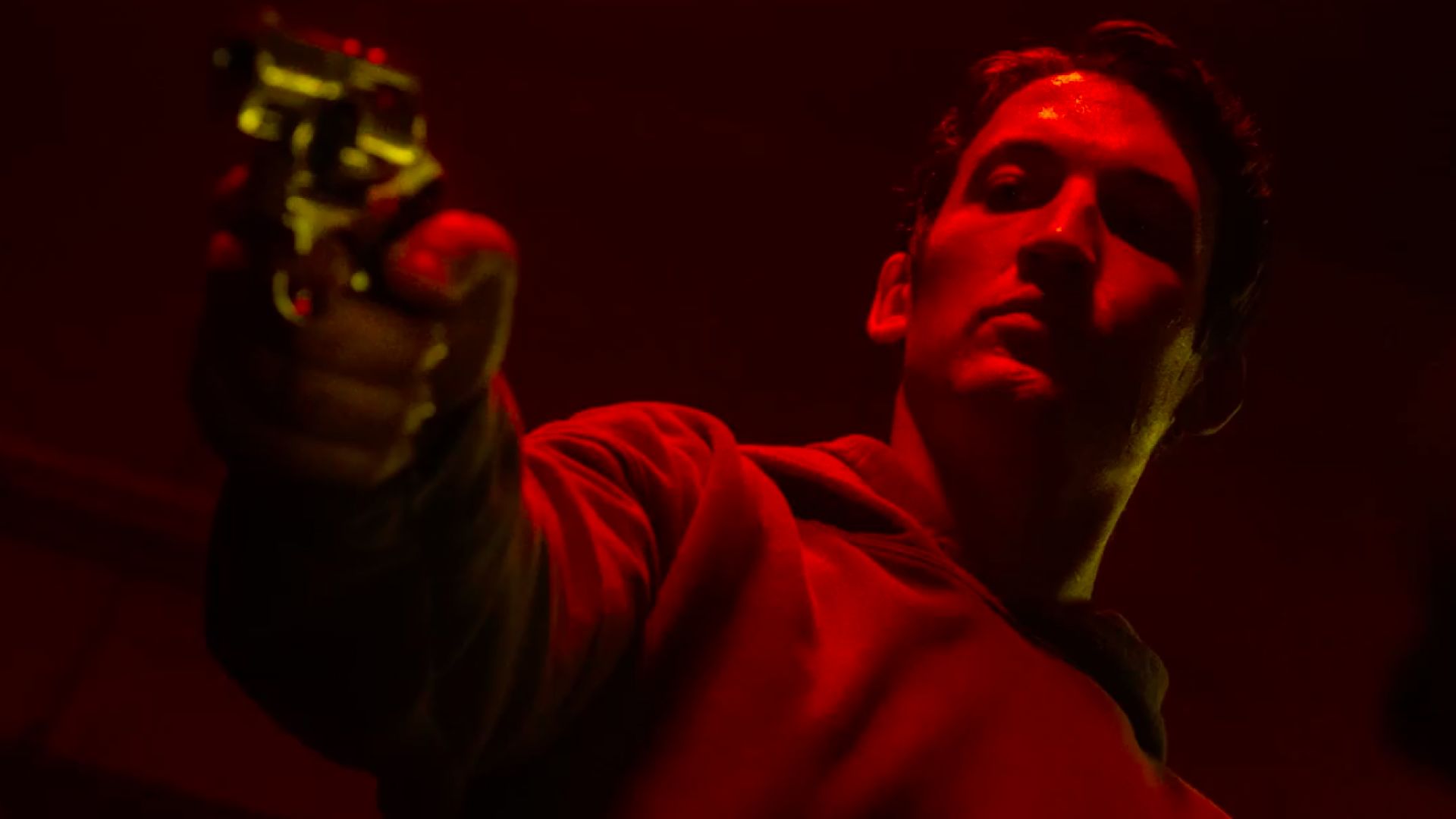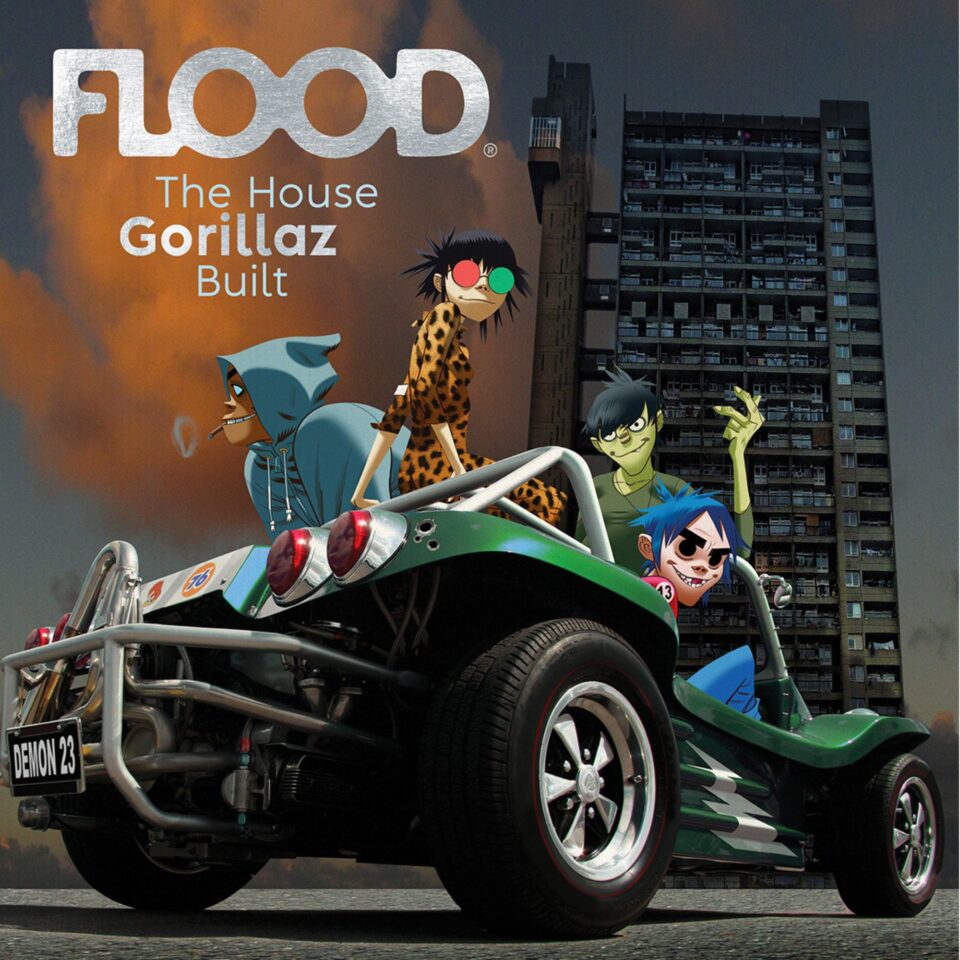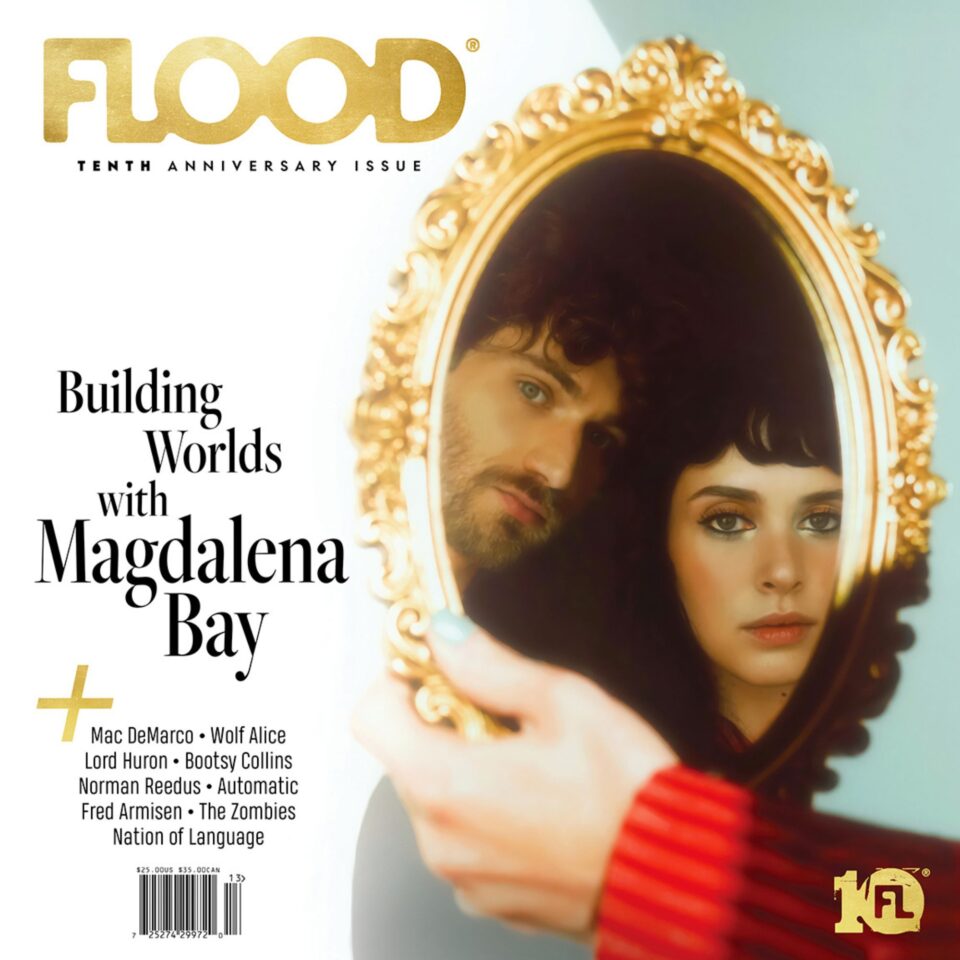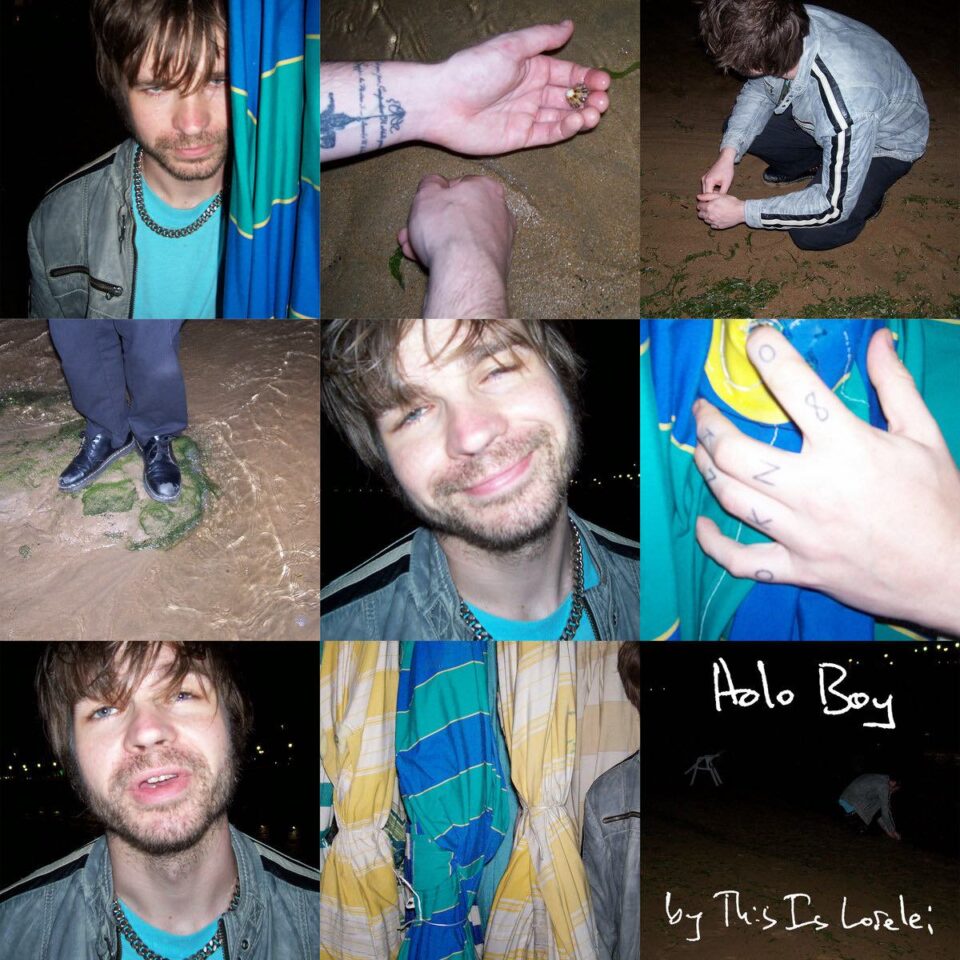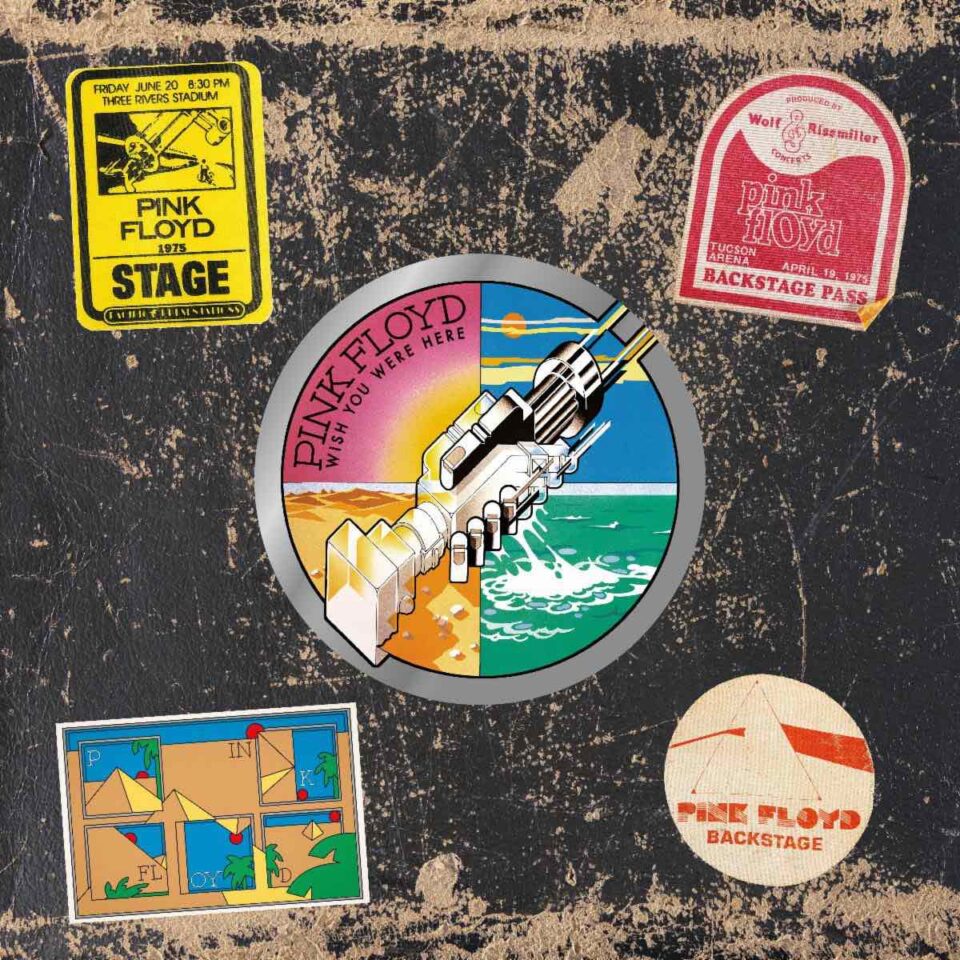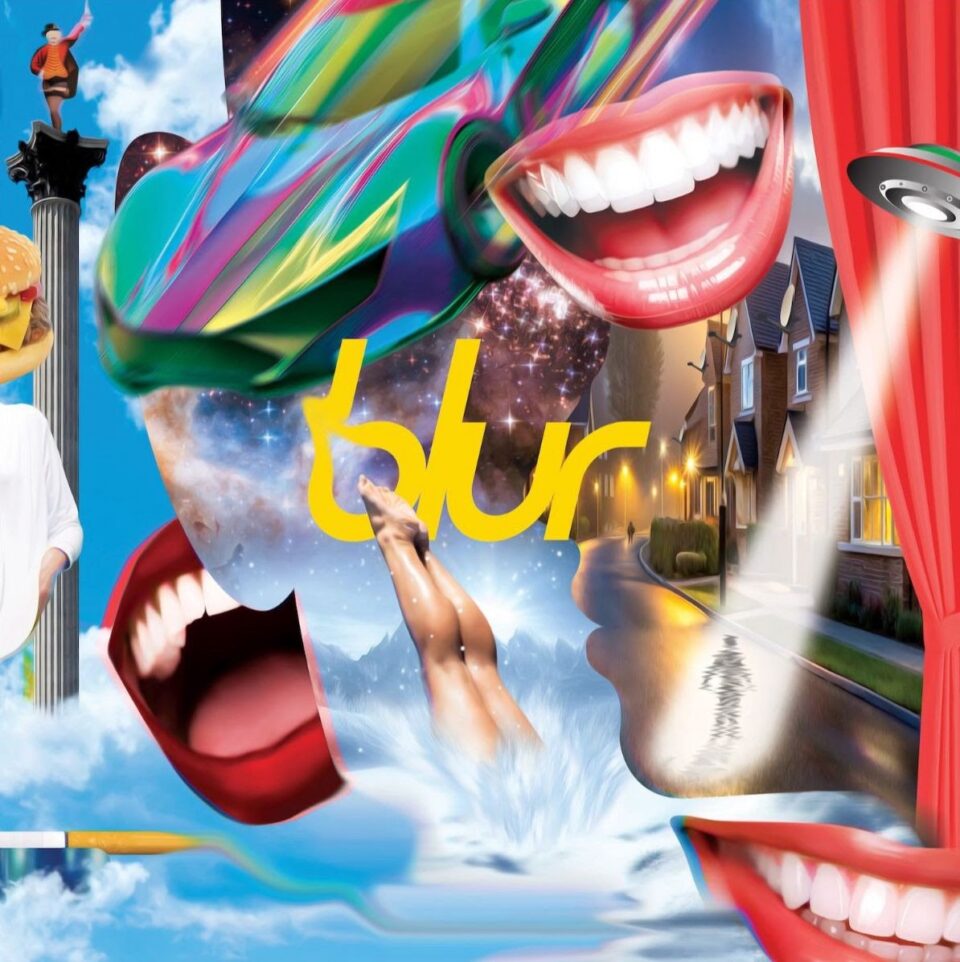Cliff Martinez was “a little stunned” when he watched Drive for the first time. He had scant time to compose the score—only about four weeks until its premiere at Cannes in May 2011—and he actually put his work for Steven Soderbergh’s Contagion on hold in order to make it happen. But he was intrigued by the film’s young Danish director, Nicolas Winding Refn.
“Nicolas pulled me aside and said, ‘I always wanted to make a fairy tale about Los Angeles,’” said Martinez. “I remembered that comment; it gave me an impression of what it was. I thought it was like a tender, innocent little love story. Then when I saw people getting their eyes gouged out, arms cut, and skulls crushed, the fairy tale analogy momentarily went out the window.”
Martinez split the difference, and scored it like a fairy tale—emphasizing a serene, quasi-religious anthem for glassy synths and Cristal Baschet, his love theme for Ryan Gosling and Carey Mulligan. Martinez and Refn, along with Refn’s regular editor Matthew Newman, formed a tight little band that figured out how to play their audience. While the director was shocking you with visceral violence, Martinez was soothing you with a lullaby.
“We’re like a single mind, the three of us,” says Refn. “We work well together. It’s a beautiful collaboration.”
The trio’s latest project is Too Old to Die Young, a ten-episode series that recently premiered on Amazon Prime. It’s thirteen hours of black tar Refn: long, languid takes; LA’s urban grid glistening in night-time neon; and lots of sex and violence…sexy violence and violent sex. The “protagonist,” played by Miles Teller, is a dirty cop who goes even dirtier as a contract killer.
“A homicidal policeman who falls in love with violence and killing people is very Nicolas,” laughs Martinez. The composer was somewhat reticent to take on what Refn has been telling everyone is “a thirteen-hour movie,” having experienced the intense workload and marathon of scoring Soderbergh’s Cinemax series, The Knick.
“He just warned me: ‘It’s going to be really grueling, so get your espresso machine out,’” says Refn. “I had kind of underestimated that. He was right. I shot for ten months every day, and I shoot in chronological order, so we would just feed him material along the way.”
But Martinez was “excited by the idea of longform, that it was a lot of characters, and a lot of screen time,” explaining, “I think my best work has been with Soderbergh and Nic, and it’s primarily because monogamy has its advantages. You just go a little deeper with somebody that you’ve worked with before. Another reason is because they probably trust me a little bit more than the people I’m working with for the very first time. They just give you a little bit more creative latitude. I think that makes for a better score.”
“Monogamy has its advantages. You just go a little deeper with somebody that you’ve worked with before. They probably trust me a bit more than the people I’m working with for the very first time.” — Cliff Martinez
Soderbergh’s philosophy on writing scores has always been “less is more,” although he’s certainly elicited some incredible work from Martinez—perhaps nothing as majestic and melancholy as his work on Solaris—but Refn turned the composer from a lifelong minimalist into a balls-out maximalist. “As a director,” Martinez says, “he’s probably a bigger music freak than most. You can tell by the way he cuts things that he’s just leaving a great, big canvas for the music.”
“It’s also about trust,” says Refn. “When I do the scripts, it’s almost like, ‘And here Cliff comes in’ [laughs]. Instead of dialogue, you write ‘Cliff,’ you know.”
After the shimmering, synthy soundtrack for Drive, Martinez has upsized his scores for each successive Refn project. I asked the director what he considers key moments transformed by the scores in Only God Forgives and The Neon Demon: “I love the fight scene in Only God Forgives,” he says. “I know it’s been copied and plagiarized a lot—I won’t mention any names. But I look at that as a badge of honor. It’s OK. They don’t have to apologize for it, they can just thank Cliff and I for inspiring them. And I would certainly say, in Neon Demon, it’s the fashion show.”
On Too Old to Die Young, Martinez wanted to further max-out and reinvent his musical vocabulary for Refn, so he added a few orchestral instruments—flute, cello, piano—to the usual synthesizer stew.
“I think one of the big curveballs is, there are some scenes of extreme violence where the music is very beautiful and elegiac,” Martinez says. “I mean, ever since you had opera music for knocking off the rival gang in The Godfather, scenes that are super violent with beautiful music playing in the background perhaps is not a new idea. But my role model, in some of these scenes with the character Yaritza [Cristina Rodlo], was Liberace.
“More and more, I want to be less of a minimalist, and more of a maximalist,” he continues. “So I’ve been trying to figure out ways to just kind of put more music out there, a more active type of music. And the Liberace piano thing I found to be a great device that was used throughout the film. It’s a theme that’s very florid and beautiful, but she’s doing the opposite of that.”
Only a director like Refn, who craves the unexpected, would encourage such wild unconventionality.
“Most music is used very poorly,” Refn says, “because it just becomes, you know: ‘insert emotion here, there, and there.’ It’s like sound—underscore a door opening and closing, you know. Sound is an incredible medium to work within, but it’s often just underscoring what was already expected.”
“Most music is used very poorly, because it just becomes, you know: ‘insert emotion here, there, and there’ … it’s often just underscoring what was already expected.” — Nicolas Winding Refn
The director was introduced to the power of film music as a boy, when his mother gave him an LP of Ennio Morricone’s Spaghetti score for Once Upon a Time in the West. “I would listen to that score before [making] every single movie about a trillion times,” he says. “It certainly taught me how it’s the other 50 percent of a movie.” (Fittingly, one of the first albums Martinez owned was Morricone’s score for A Fistful of Dollars, which he was “completely infatuated with.”)
“Music and images were the first constellation,” says Refn. “Dialogue, narrative really came many years later. So, there is some kind of symbiotic relationship between music and visuals. I think ‘support’ is the wrong word. I think it’s like an actor or an actress—it’s like a performer. It’s like the camera. The camera is not there to support anything. The camera’s there because there would be no narrative without cuts. [Without] music, there would be no internal odyssey, in a way. Music is the channeling of the soul.”
I ask Refn if he relies on Martinez’s music to supply the emotions that his taciturn characters rarely express—and he chafed at the question. “They don’t explain their emotions,” he insists. “You’re using the wrong words. Expressing is different than explaining. One of the problems with narrative is, of course, lazy storytelling, and the easiest way to become lazy is just to explain it. And by explaining, you inform, and therefore you just move on, because you have the information.
“My characters express emotions that are up to interpretation—which is what life is. It’s like looking at a painting, reading a poem, listening to a piece of music. It doesn’t explain itself to you, it infuses itself into your brain. It violates you. So your words are lazy. You’re asking a lazy question.”
Fair enough, I say—so what is Martinez’s role in terms of the emotion in Refn’s stories?
“The combination of the silence with the music creates an internal narrative,” he says. “It heightens the emotions to be more effective. That’s what music can do. It highlights. You can listen to a certain theme and it’ll make you cry automatically, because it reminds you of something, or it touches your inner string—that triggers tears.
“Silence is the loudest sound in the universe, because it’s the only thing that makes you stop and look around. Because silence is what we all fear. But silence is the sound of the soul. So, combining music with silence and an image, it’s multi-layered. It’s like painting. Each stroke adds more clarity—not in terms of explanation so much as an experience.”
Cliff Martinez took an unconventional path into film scoring. He was a rock-loving drummer in high school, and played in several punk bands in LA in the 1970s—his biggest spots were recording with The Weirdos and Captain Beefheart—before he joined the Red Hot Chili Peppers for their first two albums. While he was with the band, he bought a sample drum machine and started making weird, experimental music out of sampled noises (which may or may not have included flatulence).
The Chili Peppers had no use for that kind of thing, but Pee-wee Herman did. Through a mutual friend, Martinez got connected to Paul Reubens’ radical Pee-wee’s Playhouse, and he scored an episode in 1987. A young Steven Soderbergh saw it and, not knowing any other film composers, asked Martinez to score his debut film: sex, lies, and videotape.
That experience “was quite a windfall,” Martinez says, “because it exceeded everybody’s expectations. And at that point I thought, ‘Well, I don’t think I’m Jerry Goldsmith or John Williams, but maybe there’s a place for me in this business.’ I got paid like $10,000, which seemed like a ridiculous amount of money at the time, and I just thought the money was great, the relationship with the director was great, the outcome was great—the film got a lot of attention and acclaim. I thought this was better than traveling around the country in a smoke-filled van, playing the same material night after night in a nightclub.”
“The phone wasn’t ringing with any degree of regularity until Contagion and Drive came out within the same week.” — Martinez
He went on to score nine more films (plus The Knick) for Soderbergh, but toiled in relative obscurity throughout the ’90s and 2000s. Martinez was doing creative and varied work, but the films—Kafka, Gray’s Anatomy, The Limey—weren’t drawing much attention his way. More high-profile were Traffic and Solaris, both with exquisite scores, but for some reason he wasn’t making the leap into Hollywood consciousness.
Until 2011.
“The phone wasn’t ringing with any degree of regularity until Contagion and Drive came out within the same week,” he says.
Refn—through the platform of provocative filmmaking and his desire for big, sexy music—made people stop and notice Cliff Martinez. In turn, the composer noticed that people were suddenly listening to his soundtrack albums just for the sheer deliciousness of the music, and he’s been emboldened by the experience.
“I’ve been in the business since ’89,” he says. “I think you just want to grow and evolve and do different things. And guys like Nicolas, when they work with me on film number three, film number four, they want me to do something different. So I’m kind of a product of the projects and the people I collaborate with, and they’re always pushing me to change it up a bit.”
When they first worked together on Drive, Refn would cite musical reference points like Brian Eno, Goblin, or Trent Reznor. “But now,” Martinez says, “Nicolas just seems to say: ‘Be yourself.’”
“Cliff’s an original,” says Refn. “Cliff is 100 percent Cliff. And being 100 percent you never goes out of fashion.” FL

